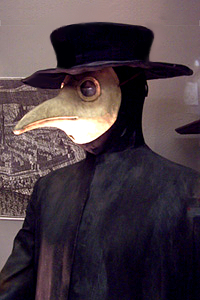#Phonepunk#
Banned
The Great Plague (14th-20th centuries)
The reality is that it was a constant presence across Europe and Asia for over over 500 years, killing of 30% of the population in waves, upending society and economy, and causing after effects both positive (rising wages, global cooling, cheaper land) and negative (rolling famines, persecution & religious extremism). The plague hit everyone, touching the lives of young and old, rich and poor, king and beggar. It fundamentally altered the social, political, economic, and mental/spiritual fabric of mankind. Now that we face our own unknown pandemic, perhaps we can learn a little by looking back at the past. These are the facts according to Wikipedia and they match what I've read in several books on the topic. Surviving primary sources from the era before the Printing Press are rare but IMO we can be confident in having a fairly accurate model of the size and scope of what really happened.
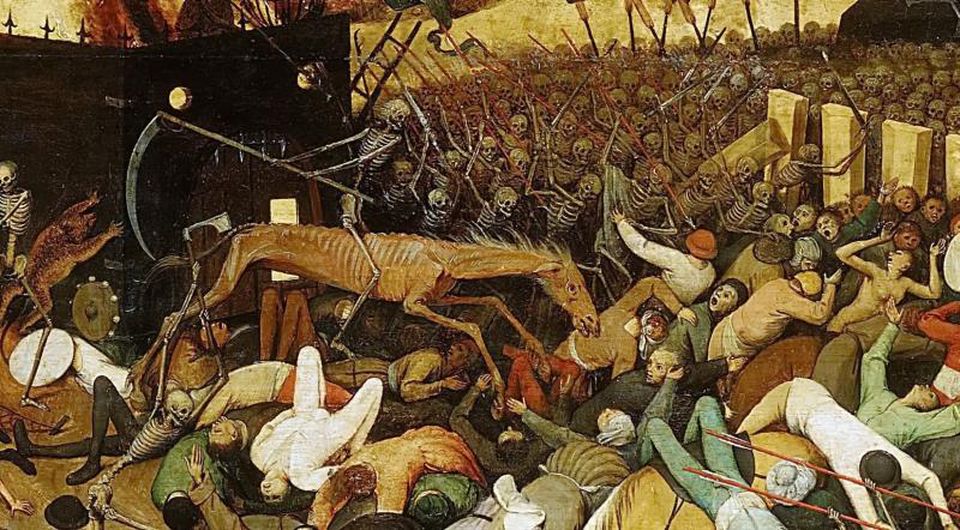
The Black Death, also known as the Pestilence, Great Bubonic Plague, the Great Plague or the Plague, or less commonly the Great Mortality or Black Plague, was one of the most devastating pandemics in human history, resulting in the deaths of an estimated 75 to 200 million people in Eurasia, peaking in Europe from 1347 to 1351. The bacterium Yersinia pestis, which results in several forms of plague (septicemic, pneumonic and, the most common, bubonic), is believed to have been the cause. The Black Death was the first major European outbreak of plague and the second plague pandemic. The plague created a number of religious, social and economic upheavals, with profound effects on the course of European history.
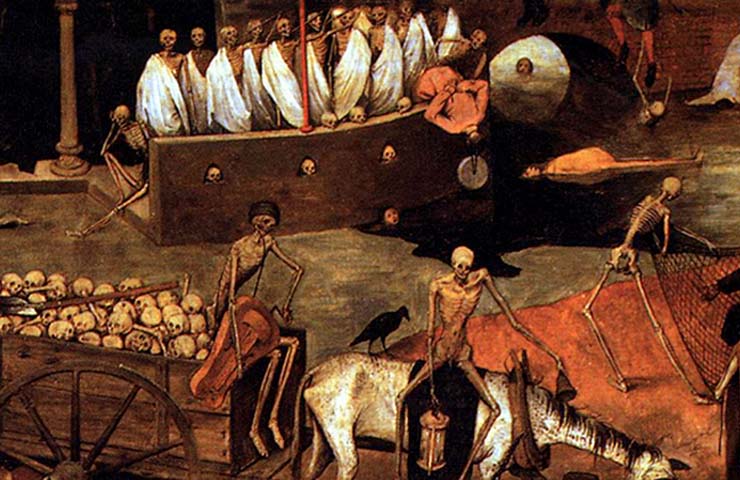
The Black Death is estimated to have killed 30% to 60% of Europe's population. In total, the plague may have reduced the world population from an estimated 475 million to 350–375 million in the 14th century. It took 200 years for Europe's population to recover to its previous level and some regions like Florence only recovered by the 19th century. The plague recurred as outbreaks until the early 20th century.
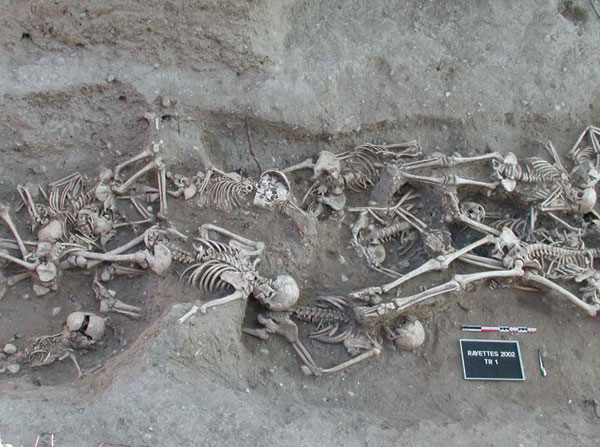
Recurrence
Main article: Second plague pandemic
The Great Plague of London, in 1665, killed up to 100,000 people.
The plague repeatedly returned to haunt Europe and the Mediterranean throughout the 14th to 17th centuries. According to Biraben, the plague was present somewhere in Europe in every year between 1346 and 1671. (Note that some researchers have cautions about the uncritical use of Biraben's data.) The Second Pandemic was particularly widespread in the following years: 1360–1363; 1374; 1400; 1438–1439; 1456–1457; 1464–1466; 1481–1485; 1500–1503; 1518–1531; 1544–1548; 1563–1566; 1573–1588; 1596–1599; 1602–1611; 1623–1640; 1644–1654; and 1664–1667. Subsequent outbreaks, though severe, marked the retreat from most of Europe (18th century) and northern Africa (19th century). According to Geoffrey Parker, "France alone lost almost a million people to the plague in the epidemic of 1628–31."
The Black Death ravaged much of the Islamic world. Plague was present in at least one location in the Islamic world virtually every year between 1500 and 1850. Plague repeatedly struck the cities of North Africa. Algiers lost 30,000–50,000 inhabitants to it in 1620–1621, and again in 1654–1657, 1665, 1691, and 1740–1742. Plague remained a major event in Ottoman society until the second quarter of the 19th century. Between 1701 and 1750, thirty-seven larger and smaller epidemics were recorded in Constantinople, and an additional thirty-one between 1751 and 1800. Baghdad has suffered severely from visitations of the plague, and sometimes two-thirds of its population has been wiped out.
The plague was carried by fleas on sailing vessels returning from the ports of Asia, spreading quickly due to lack of proper sanitation: the population of England, then about 4.2 million, lost 1.4 million people to the bubonic plague. Florence's population was nearly halved in the year 1347. As a result of the decimation in the populace the value of the working class increased, and commoners came to enjoy more freedom. To answer the increased need for labor, workers traveled in search of the most favorable position economically.
Third plague pandemic
Main article: Third plague pandemic
The third plague pandemic (1855–1859) started in China in the mid-19th century, spreading to all inhabited continents and killing 10 million people in India alone. Twelve plague outbreaks in Australia between 1900 and 1925 resulted in well over 1,000 deaths, chiefly in Sydney. This led to the establishment of a Public Health Department there which undertook some leading-edge research on plague transmission from rat fleas to humans via the bacillus Yersinia pestis.
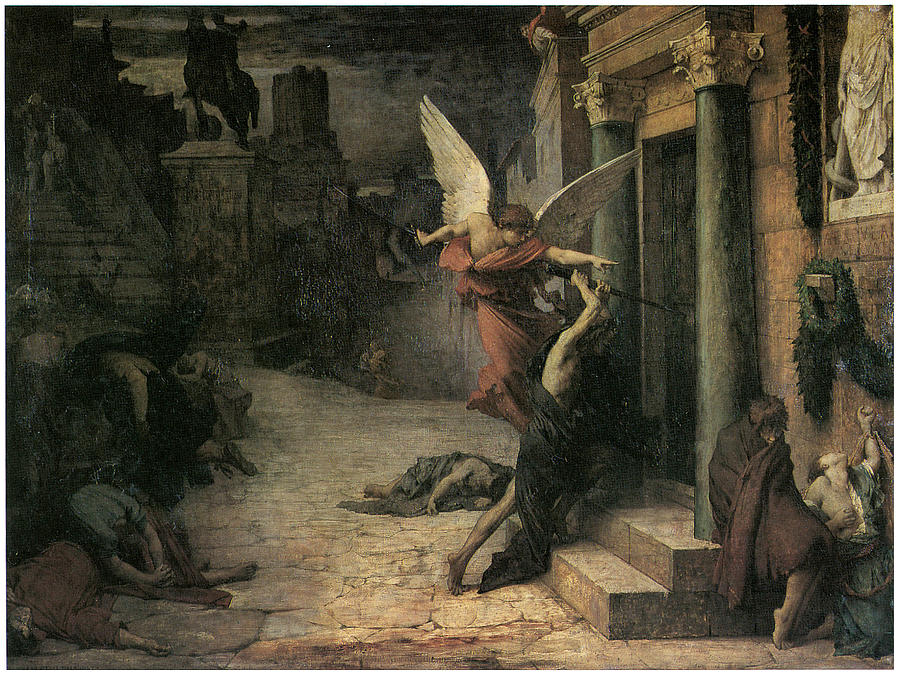
Social
One theory that has been advanced is that the devastation in Florence caused by the Black Death, which hit Europe between 1348 and 1350, resulted in a shift in the world view of people in 14th-century Italy and led to the Renaissance. Italy was particularly badly hit by the plague, and it has been speculated that the resulting familiarity with death caused thinkers to dwell more on their lives on Earth, rather than on spirituality and the afterlife. It has also been argued that the Black Death prompted a new wave of piety, manifested in the sponsorship of religious works of art. However, this does not fully explain why the Renaissance occurred specifically in Italy in the 14th century. The Black Death was a pandemic that affected all of Europe in the ways described, not only Italy. The Renaissance's emergence in Italy was most likely the result of the complex interaction of the above factors.

Economic
With such a large population decline from the Plague, wages soared in response to a labor shortage. Landowners were also pushed to substitute monetary rents for labour services in an effort to keep tenants.
Environmental
Some historians believe the innumerable deaths brought on by the plague cooled the climate by freeing up land and triggering reforestation. This may have led to the Little Ice Age.
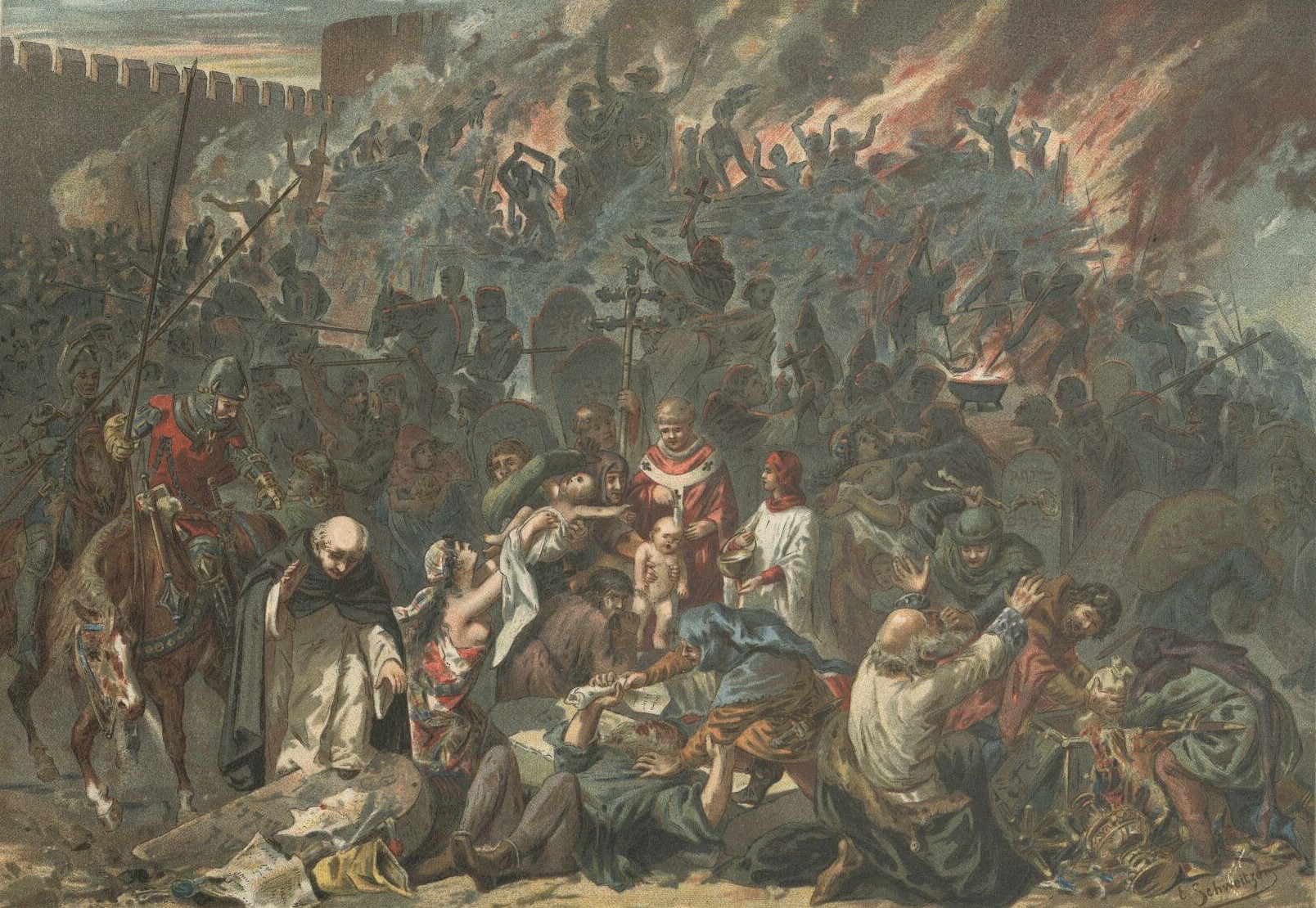
Persecutions
Renewed religious fervour and fanaticism bloomed in the wake of the Black Death. Some Europeans targeted "various groups such as Jews, friars, foreigners, beggars, pilgrims", lepers, and Romani, blaming them for the crisis. Lepers, and others with skin diseases such as acne or psoriasis, were killed throughout Europe.
Because 14th-century healers and governments were at a loss to explain or stop the disease, Europeans turned to astrological forces, earthquakes, and the poisoning of wells by Jews as possible reasons for outbreaks. Many believed the epidemic was a punishment by God for their sins, and could be relieved by winning God's forgiveness.

Flagellants
Flagellants are practitioners of an extreme form of mortification of their own flesh by whipping it with various instruments. Most notably, Flagellantism was a 14th-century movement, consisting of radicals in the Catholic Church. It began as a militant pilgrimage and was later condemned by the Catholic Church as heretical. The followers were noted for including public flagellation in their rituals. This was a common practice during the Black Death, or the Great Plague.
The first recorded cases of mass popular flagellation occurred in Perugia, in 1259. The prime cause of the Perugia episode is unclear, but it followed an outbreak of an epidemic and chroniclers report how mania spread throughout almost all the people of the city. Thousands of citizens gathered in great processions, singing and with crosses and banners, they marched throughout the city whipping themselves. It is reported that surprising acts of charity and repentance accompanied the marchers. However, one chronicler noted that anyone who did not join in the flagellation was accused of being in league with the devil. They also killed Jews and priests who opposed them. Marvin Harris links them to the Messianic preaching of Gioacchino da Fiore.
Similar processions occurred across Northern Italy, with groups up to 10,000 strong processing in Modena, Bologna, Reggio and Parma. Although certain city authorities refused the Flagellant processions entry.

Initially the Catholic Church tolerated the Flagellants and individual monks and priests joined in the early movements. By the 14th century, the Church was less tolerant and the rapid spread of the movement was alarming. Clement VI officially condemned them in a bull of October 20, 1349 and instructed Church leaders to suppress the Flagellants. This position was reinforced in 1372 by Gregory XI who associated the Flagellants with other heretical groups, notably the Beghards. They were accused of heresies including doubting the need for the sacraments, denying ordinary ecclesiastical jurisdiction and claiming to work miracles.
The Inquisition was active against any revival of the movement in the 15th century, but action against the flagellants was often taken by the local princes. In 1414, 80–90 followers of Konrad Schmid were burned in Thuringia, in Germany, even though they had recanted. Three hundred were burnt in one day in 1416, also in Thuringia. Other trials where the accused were condemned as Flagellants were recorded as late as the 1480s. The practice of flagellation within the bounds of the Catholic Church continued as an accepted form of penance.

The reality is that it was a constant presence across Europe and Asia for over over 500 years, killing of 30% of the population in waves, upending society and economy, and causing after effects both positive (rising wages, global cooling, cheaper land) and negative (rolling famines, persecution & religious extremism). The plague hit everyone, touching the lives of young and old, rich and poor, king and beggar. It fundamentally altered the social, political, economic, and mental/spiritual fabric of mankind. Now that we face our own unknown pandemic, perhaps we can learn a little by looking back at the past. These are the facts according to Wikipedia and they match what I've read in several books on the topic. Surviving primary sources from the era before the Printing Press are rare but IMO we can be confident in having a fairly accurate model of the size and scope of what really happened.

The Black Death, also known as the Pestilence, Great Bubonic Plague, the Great Plague or the Plague, or less commonly the Great Mortality or Black Plague, was one of the most devastating pandemics in human history, resulting in the deaths of an estimated 75 to 200 million people in Eurasia, peaking in Europe from 1347 to 1351. The bacterium Yersinia pestis, which results in several forms of plague (septicemic, pneumonic and, the most common, bubonic), is believed to have been the cause. The Black Death was the first major European outbreak of plague and the second plague pandemic. The plague created a number of religious, social and economic upheavals, with profound effects on the course of European history.

The Black Death is estimated to have killed 30% to 60% of Europe's population. In total, the plague may have reduced the world population from an estimated 475 million to 350–375 million in the 14th century. It took 200 years for Europe's population to recover to its previous level and some regions like Florence only recovered by the 19th century. The plague recurred as outbreaks until the early 20th century.

Recurrence
Main article: Second plague pandemic
The Great Plague of London, in 1665, killed up to 100,000 people.
The plague repeatedly returned to haunt Europe and the Mediterranean throughout the 14th to 17th centuries. According to Biraben, the plague was present somewhere in Europe in every year between 1346 and 1671. (Note that some researchers have cautions about the uncritical use of Biraben's data.) The Second Pandemic was particularly widespread in the following years: 1360–1363; 1374; 1400; 1438–1439; 1456–1457; 1464–1466; 1481–1485; 1500–1503; 1518–1531; 1544–1548; 1563–1566; 1573–1588; 1596–1599; 1602–1611; 1623–1640; 1644–1654; and 1664–1667. Subsequent outbreaks, though severe, marked the retreat from most of Europe (18th century) and northern Africa (19th century). According to Geoffrey Parker, "France alone lost almost a million people to the plague in the epidemic of 1628–31."
The Black Death ravaged much of the Islamic world. Plague was present in at least one location in the Islamic world virtually every year between 1500 and 1850. Plague repeatedly struck the cities of North Africa. Algiers lost 30,000–50,000 inhabitants to it in 1620–1621, and again in 1654–1657, 1665, 1691, and 1740–1742. Plague remained a major event in Ottoman society until the second quarter of the 19th century. Between 1701 and 1750, thirty-seven larger and smaller epidemics were recorded in Constantinople, and an additional thirty-one between 1751 and 1800. Baghdad has suffered severely from visitations of the plague, and sometimes two-thirds of its population has been wiped out.
The plague was carried by fleas on sailing vessels returning from the ports of Asia, spreading quickly due to lack of proper sanitation: the population of England, then about 4.2 million, lost 1.4 million people to the bubonic plague. Florence's population was nearly halved in the year 1347. As a result of the decimation in the populace the value of the working class increased, and commoners came to enjoy more freedom. To answer the increased need for labor, workers traveled in search of the most favorable position economically.
Third plague pandemic
Main article: Third plague pandemic
The third plague pandemic (1855–1859) started in China in the mid-19th century, spreading to all inhabited continents and killing 10 million people in India alone. Twelve plague outbreaks in Australia between 1900 and 1925 resulted in well over 1,000 deaths, chiefly in Sydney. This led to the establishment of a Public Health Department there which undertook some leading-edge research on plague transmission from rat fleas to humans via the bacillus Yersinia pestis.

Social
One theory that has been advanced is that the devastation in Florence caused by the Black Death, which hit Europe between 1348 and 1350, resulted in a shift in the world view of people in 14th-century Italy and led to the Renaissance. Italy was particularly badly hit by the plague, and it has been speculated that the resulting familiarity with death caused thinkers to dwell more on their lives on Earth, rather than on spirituality and the afterlife. It has also been argued that the Black Death prompted a new wave of piety, manifested in the sponsorship of religious works of art. However, this does not fully explain why the Renaissance occurred specifically in Italy in the 14th century. The Black Death was a pandemic that affected all of Europe in the ways described, not only Italy. The Renaissance's emergence in Italy was most likely the result of the complex interaction of the above factors.

Economic
With such a large population decline from the Plague, wages soared in response to a labor shortage. Landowners were also pushed to substitute monetary rents for labour services in an effort to keep tenants.
Environmental
Some historians believe the innumerable deaths brought on by the plague cooled the climate by freeing up land and triggering reforestation. This may have led to the Little Ice Age.

The Strasbourg massacre occurred on February 14, 1349, when several hundred Jews were publicly burnt to death, and the rest of them expelled from the city as part of the Black Death persecutions. It was one of the first and worst pogroms in pre-modern history.
Starting in the spring of 1348, pogroms against Jews had occurred in European cities, starting in Toulon. By November of that year they spread via Savoy to German-speaking territories. In January 1349, burnings of Jews took place in Basel and Freiburg, and on 14 February the Jewish community in Strasbourg was destroyed.
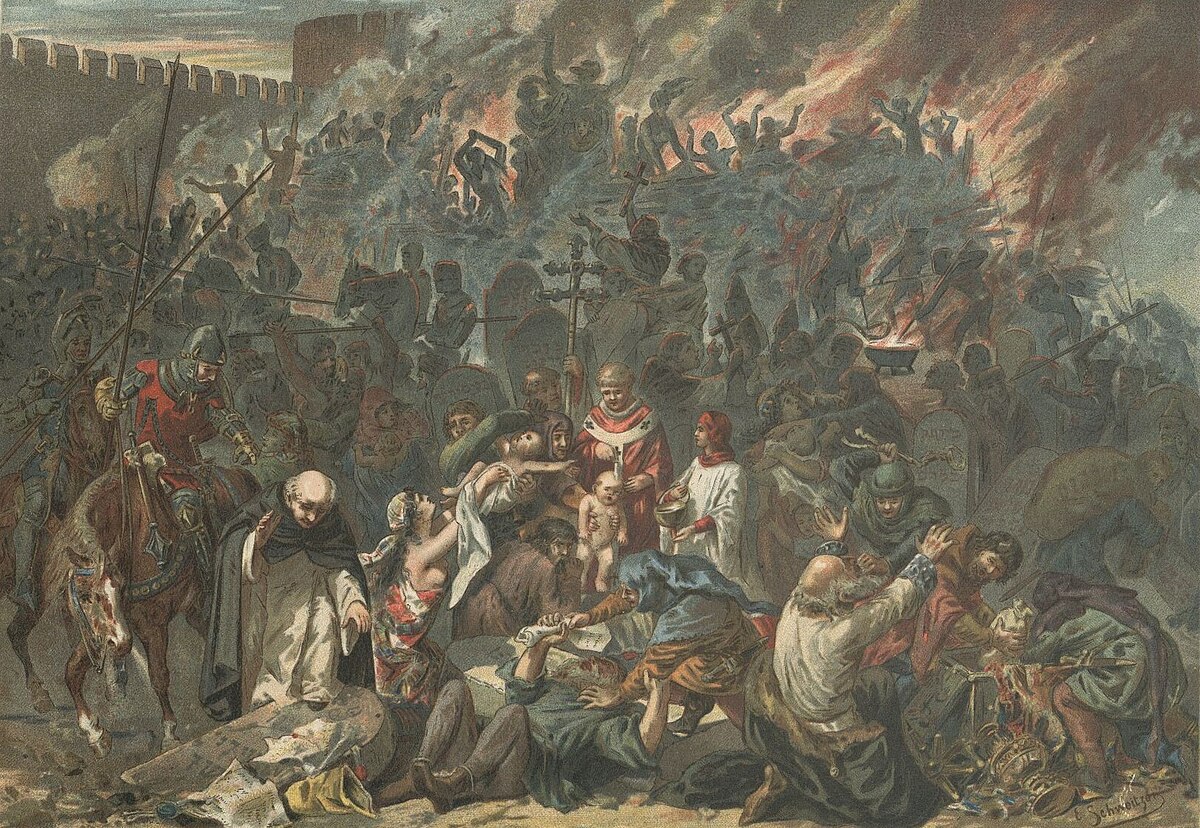
Strasbourg massacre - Wikipedia
en.wikipedia.org
Persecutions
Renewed religious fervour and fanaticism bloomed in the wake of the Black Death. Some Europeans targeted "various groups such as Jews, friars, foreigners, beggars, pilgrims", lepers, and Romani, blaming them for the crisis. Lepers, and others with skin diseases such as acne or psoriasis, were killed throughout Europe.
Because 14th-century healers and governments were at a loss to explain or stop the disease, Europeans turned to astrological forces, earthquakes, and the poisoning of wells by Jews as possible reasons for outbreaks. Many believed the epidemic was a punishment by God for their sins, and could be relieved by winning God's forgiveness.

Flagellants
Flagellants are practitioners of an extreme form of mortification of their own flesh by whipping it with various instruments. Most notably, Flagellantism was a 14th-century movement, consisting of radicals in the Catholic Church. It began as a militant pilgrimage and was later condemned by the Catholic Church as heretical. The followers were noted for including public flagellation in their rituals. This was a common practice during the Black Death, or the Great Plague.
The first recorded cases of mass popular flagellation occurred in Perugia, in 1259. The prime cause of the Perugia episode is unclear, but it followed an outbreak of an epidemic and chroniclers report how mania spread throughout almost all the people of the city. Thousands of citizens gathered in great processions, singing and with crosses and banners, they marched throughout the city whipping themselves. It is reported that surprising acts of charity and repentance accompanied the marchers. However, one chronicler noted that anyone who did not join in the flagellation was accused of being in league with the devil. They also killed Jews and priests who opposed them. Marvin Harris links them to the Messianic preaching of Gioacchino da Fiore.
Similar processions occurred across Northern Italy, with groups up to 10,000 strong processing in Modena, Bologna, Reggio and Parma. Although certain city authorities refused the Flagellant processions entry.

Initially the Catholic Church tolerated the Flagellants and individual monks and priests joined in the early movements. By the 14th century, the Church was less tolerant and the rapid spread of the movement was alarming. Clement VI officially condemned them in a bull of October 20, 1349 and instructed Church leaders to suppress the Flagellants. This position was reinforced in 1372 by Gregory XI who associated the Flagellants with other heretical groups, notably the Beghards. They were accused of heresies including doubting the need for the sacraments, denying ordinary ecclesiastical jurisdiction and claiming to work miracles.
The Inquisition was active against any revival of the movement in the 15th century, but action against the flagellants was often taken by the local princes. In 1414, 80–90 followers of Konrad Schmid were burned in Thuringia, in Germany, even though they had recanted. Three hundred were burnt in one day in 1416, also in Thuringia. Other trials where the accused were condemned as Flagellants were recorded as late as the 1480s. The practice of flagellation within the bounds of the Catholic Church continued as an accepted form of penance.
Last edited:

